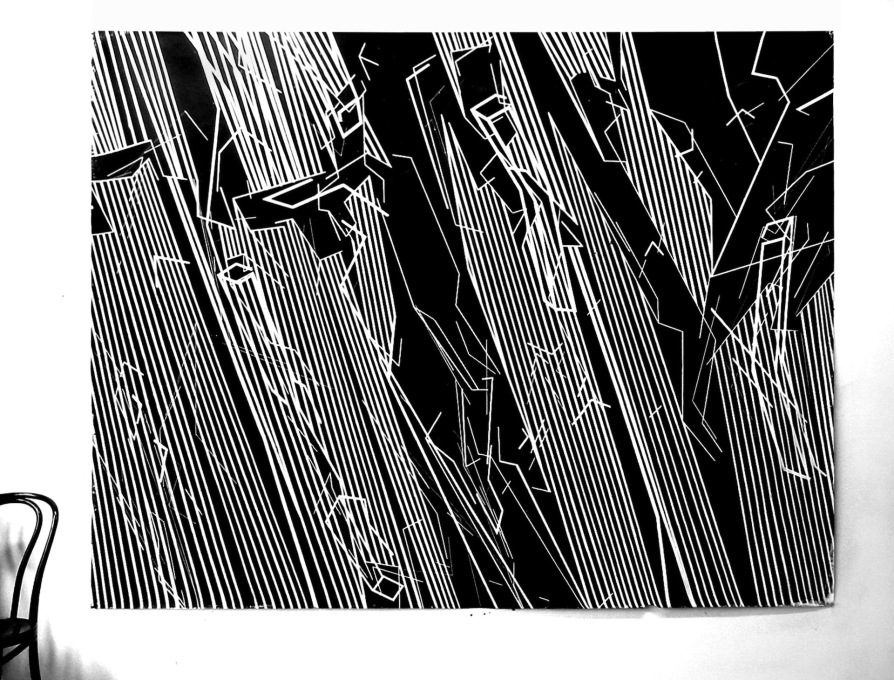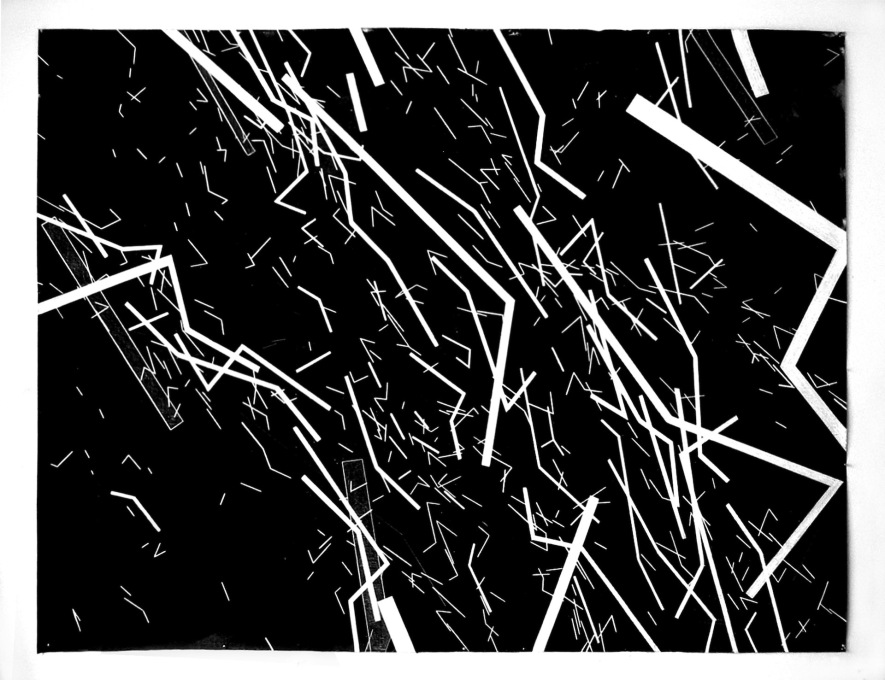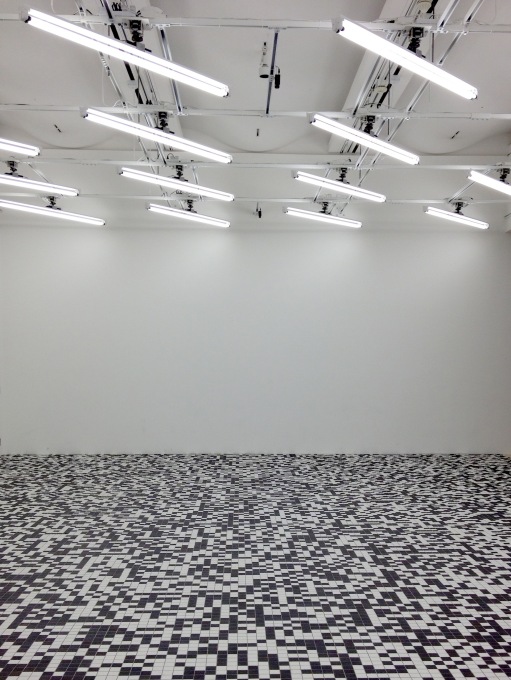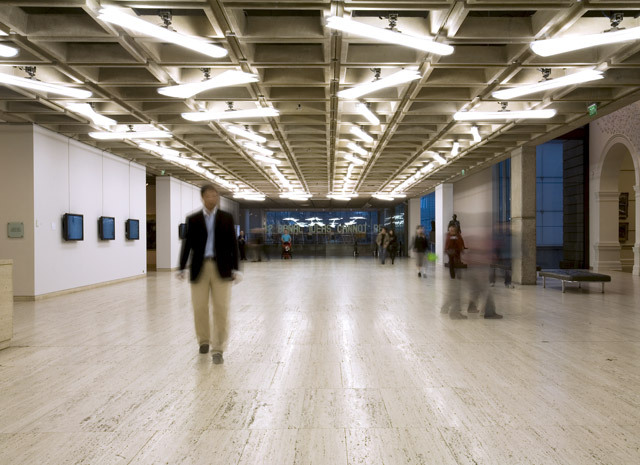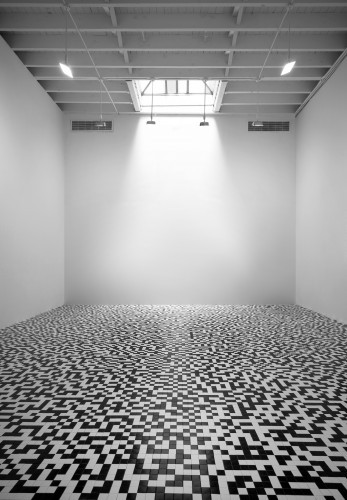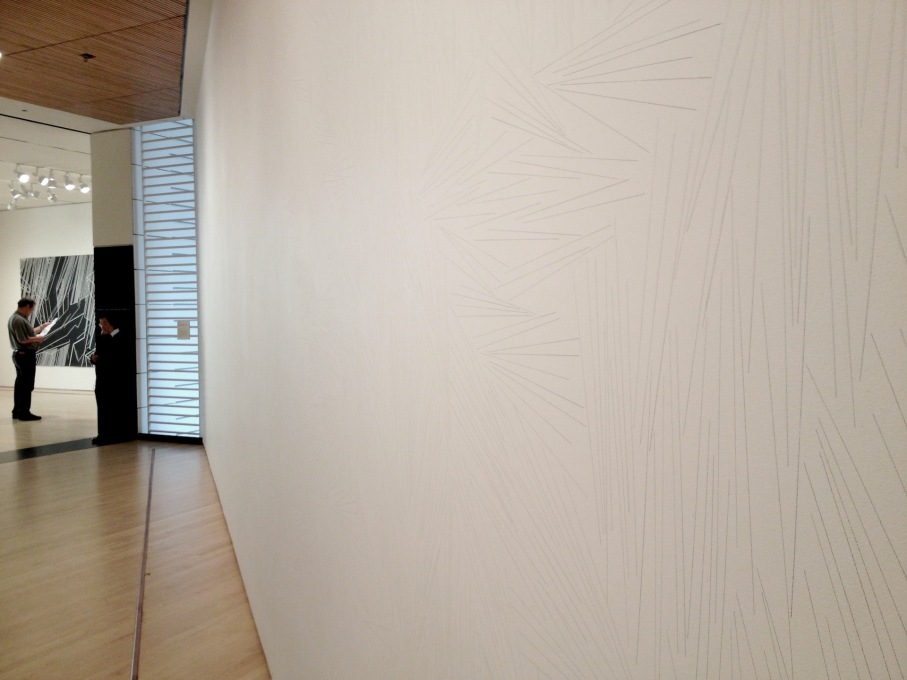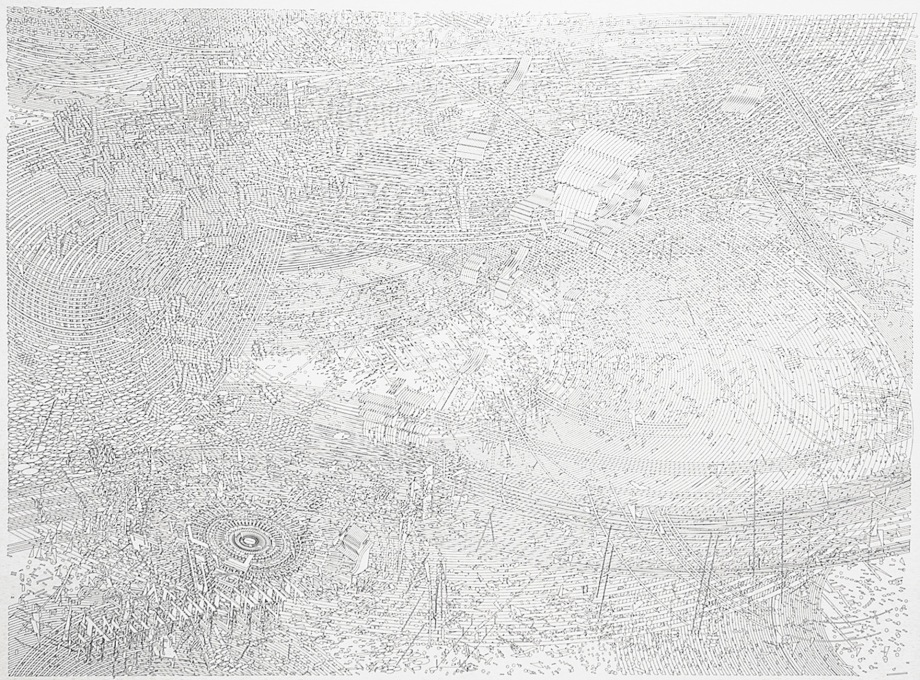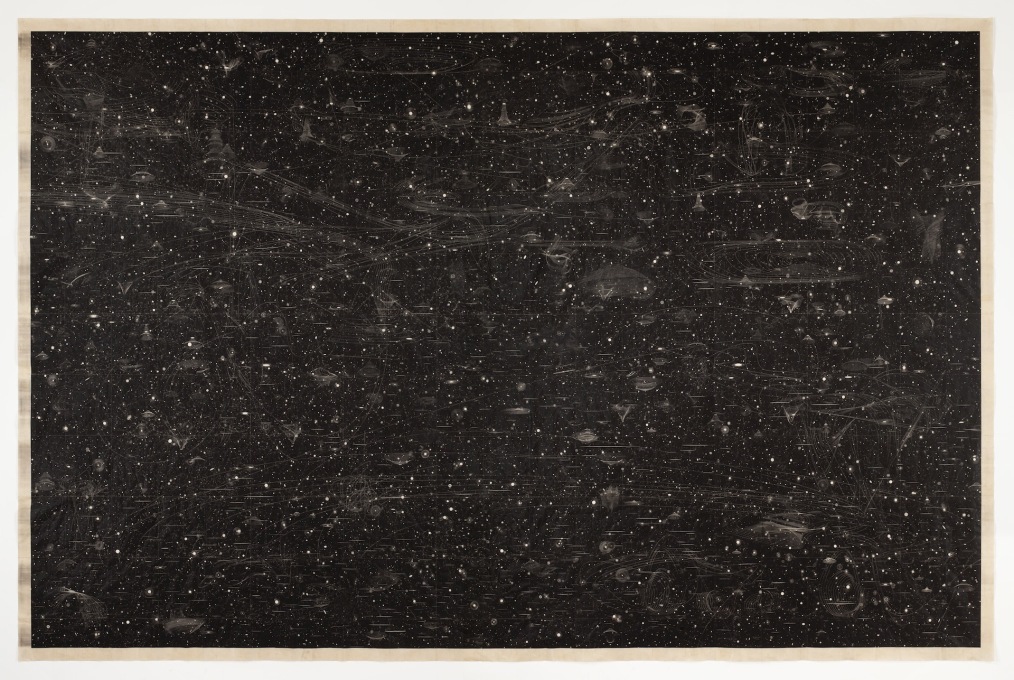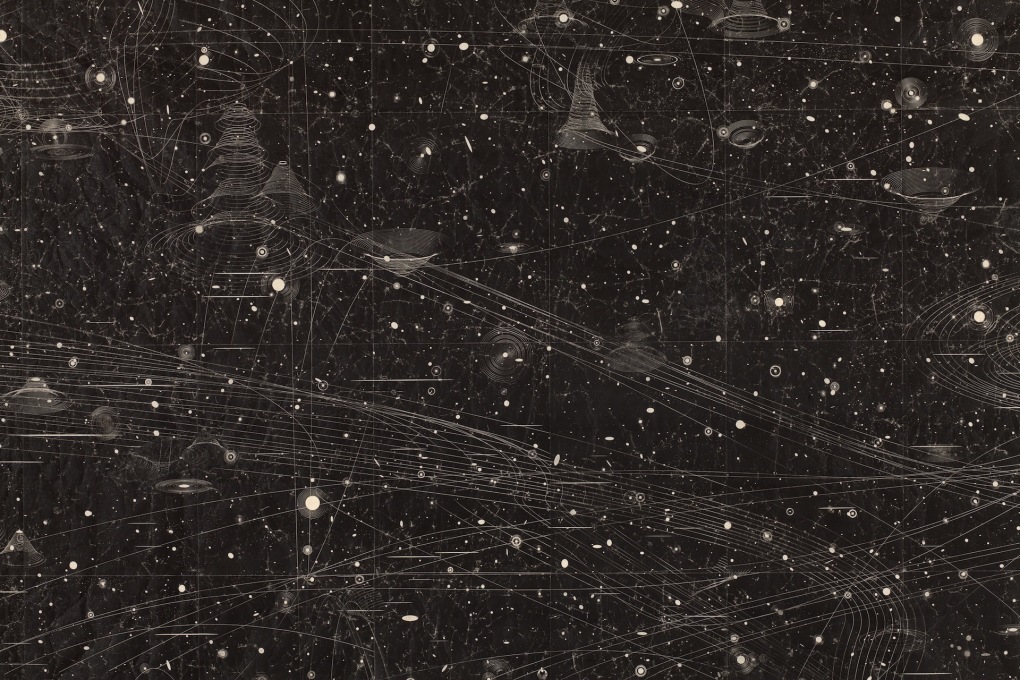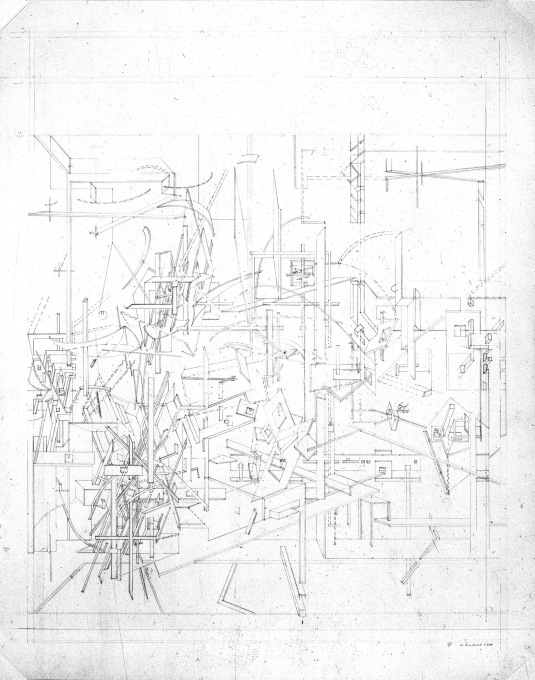Field Conditions, an exhibition of spatial experiments open at the San Francisco Museum of Modern Art (SFMOMA) until January 6, 2013, negotiates limits in curious and compelling ways when looking at the potentiality of the field in contemporary spatial practice. The title, from architect and theorist Stan Allen's 1996 essay by the same name, pays homage to methodology and theory that allowed for a breakdown of normative binary relationships in art and architecture. In general, the exhibit is a balanced mix between a variety of practitioners, bringing together a diverse collection of painting, technical drawing, sound and video pieces, as well as full-scale installations: each piece represents a different take on the question of the field, creating different spatial experiences for the audience. However, in an effort to showcase works at the intersection between architecture, art, and science (which is certainly on-trend), Field Conditions seems to have constrained the scope and voice of each discipline - a strategy that conflicts with the infinite expanse that these systemic investigations hope to convey.
Whether by curation or coincidence, the exhibited work in Field Conditions is emphatically two-dimensional. Yes, Rafael Lozano-Hemmer's reactive fluorescent light installation (Homographies) and Tauba Auerbach's black-and-white tiled ground (50/50 Floor) take up a third of the exhibition space as the show’s attempt to confront real time and space – yet the pieces remain constrained to their respective ceiling and floor planes, falling short in their flat legibility (it's not surprising that the press images of both works are from previous exhibitions in separate spaces). Auerbach's compelling intent at pulsing, unpredictable landscapes reads static; Lozano-Hemmer's hope to create a feedback game with Homographies ends up one-sided. Emerging systems encompass rich, interactive fields where individual entities collide, coalesce and create a larger, alternative consciousness in response to the field itself. As Homographies’ fluorescent lights rotate benignly above and 50/50 Floor dissolves silently below, one can't help but ask, “and then what?”
The other two rooms of the exhibition are dense with greatly varied understandings of the field. Daniel Libeskind's Micromegas Studies (1978) are richly-developed drawings composed of tectonic elements that could either be exploding or congealing. Marsha Cottrell's Hypothetical Place 2 (2002) utilizes a complex languages of marks to interweave hints of architectural and urban typologies; conversely, her A Black Powder Rains Down Gently On My Sleepless Night (2012) is a landscape of interstice and void, an invented cosmos that is simultaneously static and dynamic, haptic and digital, gravitational and weightless.
The pairing of A Black Powder Rains Gently On My Sleepless Night with Lebbeus Woods' Conflict Space 1, 2, and 3 (2006) is spot-on: the four pieces together in one room create a weight of depth and spatial transcendence. With these pieces, both Woods and Cottrell harness the limitations of their materials to create a tactile anchor for the viewer. Every mark Woods has made in thick white crayon is a figure activated in space. Looking from the outside, one is mentally and physically pulled deeper into this celestial network – SFMOMA's futile red tape installed in front of each Conflict Space did little to deter viewers from pressing up as close to the works as possible. In light of Lebbeus Wood's untimely death a little over one month ago, these drawings have taken on new meaning: they have always been passageways, connective works of architecture in their own right; now they are portals free of material constraints questioning the most unknowable limit.
In the end, Field Conditions delivers on its intent to "confront the notion of boundary." However, it must be noted that Allen, Libeskind, Archizoom, and the other groundbreaking artists and architects credited in Field Conditions' exhibition description are part of a larger dialogue that has unfortunately been truncated. For a conversation as important as this to limit itself so as to ignore the revolution of the free plan and the consequences of the modern movement is a critical misstep. Arguably here is where the field is first foregrounded, and the omission of even a mention is disappointing. Ultimately, Field Conditions is a delicate frame that highlights a small portion of relevant conceptual art, science, and theoretical architecture: take Sol LeWitt's Wall Drawing #45, quietly covering a display surface beyond the entrance of the exhibition. One exits questioning, reflecting, and craving something more.
- Elizabeth Feder, San Francisco
Field Conditions
1 September 2012 - 6 January, 2013
San Francisco Museum of Modern Art (SFMOMA)
151 Third Street
San Francisco, CA 94103




